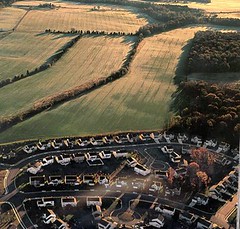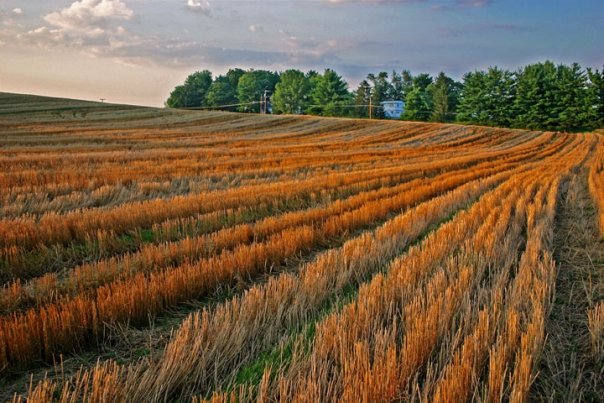Back to the farm: subdivision land now reverting to agriculture

Posted November 16, 2011 at 1:33PM
How the times have changed: while residential land prices in the US have fallen by a staggering 70 percent since 2006, the value of cropland has actually risen some 20 percent, according to a story by Robbie Whelan in the Wall Street Journal. This is causing a shift in land use away from the once-dominant trend of conversion of agricultural land to suburban sprawl and toward reversion of land held for suburban development back to farming:
“Now, with crop prices soaring and housing in a deep slump, the economics of land investment have turned upside down. Farmers and investors are buying land that had been slated for development and using it for agriculture. And they are paying a small fraction of what housing developers paid for the same land before the recession.
“The trend, if it continues, could represent a historic shift away from development in the far reaches of metropolitan areas. These properties had fueled much of the housing industry's bubble last decade.”
 This is further evidence of a change in land economics noticed three years ago by Daniel Pimlott in the Financial Times and reported here.
This is further evidence of a change in land economics noticed three years ago by Daniel Pimlott in the Financial Times and reported here.
There are, of course, significant differences from region to region, depending on the relative strength of local markets for housing and farm products. The Journal article includes an impressive map (also available here) showing a decrease in cropland prices in some places (notably the Northeastern states) of up to 14 percent since 2006, but a moderate to high increase in the vast majority of the country (including a 90 percent increase in Arizona).
Together the stories by Whelan and Pimlott cite examples in Illinois, Arizona and California of farmers reclaiming land once slated for sprawl development in order to grow corn, soybeans, hay, cotton, grapes, and walnuts. Whelan quotes a broker in Illinois who sold some subdivision land to corn and soybean farmers:
"The primary thing that was driving development here was people's desire and willingness to get out of the city. But development is over. It's done . . . It'll be 15-20 years before this land is developed."
When the world’s leading outlets of financial journalism take notice, something is happening.
Move your cursor over the images for credit information.
